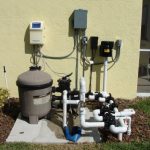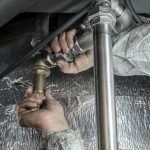As facility managers or those who run businesses, you want to ensure the facilities you own and operate run smoothly. A building must be maintained to run well.
An effective management strategy is vital to the success of your business. But have you considered how to create one and make it work for you? If not, you might be surprised at how easy it is.
To learn more, keep reading to learn more about the ins and outs of creating a facility management plan for your business facility.
Evaluate Facility Condition and Efficiency
The first step is to assess the facility by conducting a thorough evaluation of all areas. It includes the following:
- Building Technology
- Exterior finishings
- Interior finishings
- Amenities
- Infrastructure
- Energy efficiency
- Safety protocols
Once complete, list all the areas and their current condition or projected needs for future upgrades. This initial evaluation will help determine the necessary measures to ensure the facility’s productive operation and develop an approach to improvement. Some areas may require regular commercial office cleaning.
The next step is to identify and rank operational and capital needs by priority, including any necessary work, associated costs, timelines, and impact on overall facility functioning. Maintain an open dialogue with the facility’s occupants, suppliers, and other stakeholders to ensure the successful and efficient management of the facility.
Establish a Comprehensive Maintenance Plan
Establishing a comprehensive maintenance plan is a crucial aspect of creating an efficient facility management plan. A well-designed maintenance plan helps ensure that the facility operates smoothly. Here are some steps to help you establish a comprehensive maintenance plan. This includes:
Identify Equipment and Assets
Begin by creating an inventory of all the equipment and assets in your facility. Your checklist should include the following:
- HVAC systems
- Electrical systems
- Plumbing
- Machinery
Determine Maintenance Requirements
It is essential to start by evaluating the facility and its current condition. This includes looking at the age of equipment, the number of occupants, and other specifics related to the facility.
From there, it should be consistently identified and addressed. Adequate preventive maintenance plans should be implemented. This includes:
- Regular inspections
- Replacements of building components
- Evaluating reports
- Developing action plans
Prioritize Maintenance Tasks
To do this, consider the technical and operational needs of the facility, as well as any safety concerns. Prioritizing projects should also feel urgency and cost, as both are related and can influence each other.
Develop a list of the most vital maintenance tasks and develop a timeline to ensure each task is completed in a timely and cost-effective manner. Establishing a team to be responsible for the tasks can also help ensure each project is completed correctly.
Allocate Resources
Proper allocation of resources allows for smooth and efficient operation and ensures that each area of the facility receives what it needs to properly maintain the facility. When allocating resources, managers should consider the following:
- Costs
- Availability of resources
- Division among the different areas
Ongoing evaluation of the process is necessary to ensure that resources are allocated in the most efficient and effective manner.
Train and Educate Staff
Creating an efficient facility management plan is essential to the success of any organization. Training staff is critical for any effective plan. Trained staff members should be well-versed in safety protocols.
Providing training on the following to ensure a safe environment:
- First aid
- Accident prevention
- Emergency response
Track and Analyze Maintenance Data
An effective facility management plan should include a system for tracking and analyzing maintenance data. This includes:
- Collecting information on each piece of equipment
- Logging maintenance activities
- Keeping track of repairs or problems
This data should then be analyzed to recognize any issues that may need attention and to identify any potential cost savings from preventative maintenance. It should be evaluated to ensure efficiency.
Continuously Improve
To create an efficient facility management plan, one should focus on continuously improving each step of the plan. Have an inventory of all the facility management processes and related assets.
Assign a milestone to measure progress. Disseminate the plan across the organization. Improve through feedback.
Assess Appropriate Staffing Levels
Creating an efficient facility management plan requires an assessment of the appropriate staffing levels for a facility based on the number, type, and complexity of the services provided. The facilities manager should review the following:
- Objectives of the facility
- Organization and staff available
- Determine the staff size and locations
- Role qualifications
- Current staffing patterns
- Workload per employee
- Peak times
An analysis of the personnel resource utilization should be included, such as the number of staff per shift and type, start dates, and end dates. The manager should develop a plan for new employees:
- Recruiting
- Orienting
- Training
Establish future staffing levels that match the strategic objectives of the organization.
Implement a Proactive Risk Management Strategy
This plan should begin by identifying potential risks specific to the facility and its operations. Key players and stakeholders should be identified and consulted to determine possible risks. It is important to obtain feedback to evaluate and prioritize risk management strategies.
This may include the following:
- Increasing processes for certain activities
- Use of tracking activities
- Testing of resources
- Updates to the existing infrastructure
Create A Facility Management Strategy Today
A facility management plan is an essential tool for ensuring an efficient building. Following the steps outlined in this article, you can create a successful plan to help improve your building’s operations and help you reach your facility goals.
Start creating your strategy now to ensure a successful and efficient facility!
Did you find this article helpful? Check out the rest of our blogs!




